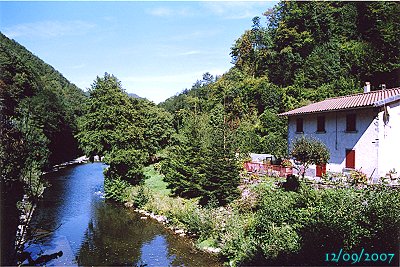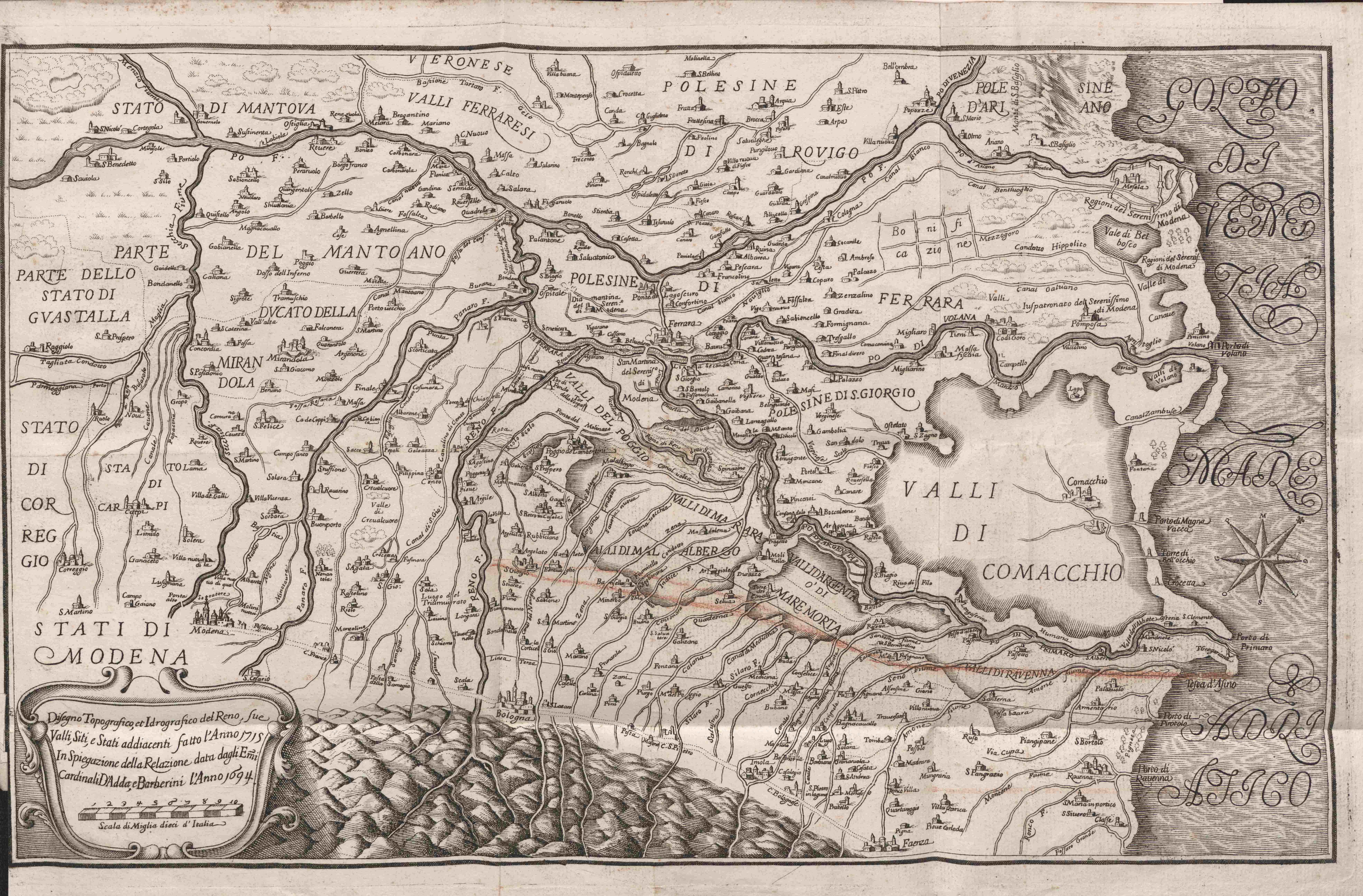|
Pracchia
Pracchia is an Italian village and hamlet (''frazione'') of the municipality of Pistoia, in the province of Pistoia, Tuscany. In 2011 it had a population of 268. History Due to its position, the village hosted a customs between the Grand Duchy of Tuscany and the Papal States. In 1524 began the construction of the first blast furnaces for the manufacture of iron from Elba island. Geography The village is located in the Tuscan-Emilian Apennine Mountains, lesser than a km from the borders of Emilia-Romagna, between Pistoia (26 km south) and Bologna (81 km north). It is 1 km from Vizzero, 11 from San Mommè, 12 from San Marcello Pistoiese and 16 from Porretta Terme. The settlement is crossed in the middle by the river Reno, that divides it into "Pracchia Alta" (Upper Pracchia) and "Pracchia Bassa" (Lower Pracchia). North of the village is located a zone named "Setteponti" (Seven Bridges), once known as "Mulino del Pillotti" (Pillotti's Mill), and seat of the ancient ... [...More Info...] [...Related Items...] OR: [Wikipedia] [Google] [Baidu] |
Pistoia
Pistoia (, is a city and ''comune'' in the Italian region of Tuscany, the capital of a province of the same name, located about west and north of Florence and is crossed by the Ombrone Pistoiese, a tributary of the River Arno. It is a typical Italian medieval city, and it attracts many tourists, especially in the summer. The city is famous throughout Europe for its plant nurseries. History ''Pistoria'' (in Latin other possible forms are ''Pistorium'' or ''Pistoriae'') was a centre of Gallic, Ligurian and Etruscan settlements before becoming a Roman colony in the 6th century BC, along the important road Via Cassia: in 62 BC the demagogue Catiline and his fellow conspirators were slain nearby. From the 5th century the city was a bishopric, and during the Lombardic kingdom it was a royal city and had several privileges. Pistoia's most splendid age began in 1177 when it proclaimed itself a free commune: in the following years it became an important political centre, erectin ... [...More Info...] [...Related Items...] OR: [Wikipedia] [Google] [Baidu] |
San Marcello Pistoiese
San Marcello Pistoiese was a ''comune'' (municipality) in the Province of Pistoia in the Italian region Tuscany, located about northwest of Florence and about northwest of Pistoia. It has been a frazione of San Marcello Piteglio since 2017. History Before the Roman conquest (3rd-2nd centuries BC), the area was likely inhabited by some Italic tribe, such as the Ligures. The Roman senator Catilina died in 62 BC in a battle not far from here. During the Middle Ages, San Marcello was an independent commune (13th century), until it fell to Pistoia in the late 14th century. The ''frazione'' of Gavinana was the location of the eponymous battle in 1530. The original settlement started to grow substantially after the construction of the road connecting Pistoia to Modena, which passed through it (1781). In 1864 it was connected by the Ferrovia Porrettana, from Pistoia to Bologna Bologna (, , ; egl, label=Emilian language, Emilian, Bulåggna ; lat, Bononia) is the capital an ... [...More Info...] [...Related Items...] OR: [Wikipedia] [Google] [Baidu] |
San Mommè
San Mommè, also spelled Sammommè, is an Italian village and hamlet (''frazione'') of the municipality of Pistoia, in the province of Pistoia, Tuscany. In 2011 it had a population of 177. Geography The village is located in the Tuscan-Emilian Apennine Mountains, nearby the borders of Emilia-Romagna. It is 11 km from Pracchia, 14 from Pistoia and 22 from Porretta Terme. It is served by a station on the Porrettana railway Bologna Bologna (, , ; egl, label= Emilian, Bulåggna ; lat, Bononia) is the capital and largest city of the Emilia-Romagna region in Northern Italy. It is the seventh most populous city in Italy with about 400,000 inhabitants and 150 different nat ...-Pistoia. Personalities * AG Fronzoni (1923-2002), graphic designer References External links * Frazioni of the Province of Pistoia Pistoia {{Pistoia-geo-stub ... [...More Info...] [...Related Items...] OR: [Wikipedia] [Google] [Baidu] |
Province Of Pistoia
The province of Pistoia ( it, provincia di Pistoia) is a province in the Tuscany region of central Italy. Its capital is the city of Pistoia and the province is landlocked. It has an area of and a total population of 291,788 inhabitants (as of 2015). There are 22 ''communes'' in the province. The province was formed in 1927 under the rule of Mussolini, and had the lowest income per capita in Tuscany in 1966 due to high poverty levels. This is because the province was mainly agricultural before World War II ended, and has since had to rapidly progress towards industrial capitalism and abandon its agricultural roots. The population of the province has recently been increasing, moving from 268,437 in 2011 to around 292,000 in 2015. The Mountains of Pistoia and the resorts Abetone and Val di Luce are tourist destinations for skiers, and the province contains a combination of flat land such as the area of the valley of the Ombrone and the river flowing through it, and mountainou ... [...More Info...] [...Related Items...] OR: [Wikipedia] [Google] [Baidu] |
Ferrovie Dello Stato Italiane
Ferrovie dello Stato Italiane S.p.A. ( "Italian Railways of the State"; previously only Ferrovie dello Stato, hence the abbreviation FS) is Italy's national state-owned railway holding company that manages transport, infrastructure, real estate services and other services in Italy and other European countries. History Early years The company was instituted by an act on 22 April 1905, taking control over the majority of the national railways, which up until that time were privately owned and managed. The president was nominated by the government. The first Director General was Riccardo Bianchi. In June 1912 Ferrovie dello Stato owned 5021 steam locomotives, 151 railcars, 10,037 coaches, 3371 baggage cars and 92,990 goods wagons.Victor Freiherr von Röll''Enzyklopädie des Eisenbahnwesens.''Band 6, Urban & Schwarzenberg, Berlin, 1914, p. 297. (in German) With the rise of Fascism, a centralization policy was carried out. The board of directors and chief administrator office w ... [...More Info...] [...Related Items...] OR: [Wikipedia] [Google] [Baidu] |
Alto Pistoiese Railway
The musical term alto, meaning "high" in Italian (Latin: ''altus''), historically refers to the contrapuntal part higher than the tenor and its associated vocal range. In 4-part voice leading alto is the second-highest part, sung in choruses by either low women's or high men's voices. In vocal classification these are usually called contralto and male alto or countertenor. Such confusion of "high" and "low" persists in instrumental terminology. Alto flute and alto trombone are respectively lower and higher than the standard instruments of the family (the standard instrument of the trombone family being the tenor trombone), though both play in ranges within the alto clef. Alto recorder, however, is an octave higher, and is defined by its relationship to tenor and soprano recorders; alto clarinet is a fifth lower than B-flat clarinet, already an 'alto' instrument. There is even a contra-alto clarinet, (an octave lower than the alto clarinet), with a range B♭0 – D4. Etym ... [...More Info...] [...Related Items...] OR: [Wikipedia] [Google] [Baidu] |
Narrow-gauge Railway
A narrow-gauge railway (narrow-gauge railroad in the US) is a railway with a track gauge narrower than standard-gauge railway, standard . Most narrow-gauge railways are between and . Since narrow-gauge railways are usually built with Minimum railway curve radius, tighter curves, smaller structure gauges, and lighter rails, they can be less costly to build, equip, and operate than standard- or broad-gauge railways (particularly in mountainous or difficult terrain). Lower-cost narrow-gauge railways are often used in mountainous terrain, where engineering savings can be substantial. Lower-cost narrow-gauge railways are often built to serve industries as well as sparsely populated communities where the traffic potential would not justify the cost of a standard- or broad-gauge line. Narrow-gauge railways have specialised use in mines and other environments where a small structure gauge necessitates a small loading gauge. In some countries, narrow gauge is the standard; Japan, Indone ... [...More Info...] [...Related Items...] OR: [Wikipedia] [Google] [Baidu] |
Reno (river)
The Reno () is a river of Emilia-Romagna, northern Italy. It is the tenth longest river in Italy (the sixth longest of those that flow directly into the sea) and the most important of the region apart from the Po. It has a drainage basin of about .Reno Basin Authority The annual average discharge at the mouth is about ; at the point the river start to flow in the Pianura Padana (Po River Plain), it amounts to about . The highest values registered at the mouth have approached , but the typical value when the river is in flood is around . The minimal discharge reported is . The river rises in the Le Lari massif of the province of Pistoia (Tuscany) at about above sea level, from two streams that join near Le Piastre, in the ''comune'' of Pistoia. Its upper course marks the border between Tuscany and Emilia-Romagna and flows in a wooded area crossed by the Bologna-Porretta-Pistoia railway line (inaugurated in 1864 and one of the most outstanding for the time as for engineering effo ... [...More Info...] [...Related Items...] OR: [Wikipedia] [Google] [Baidu] |
Porretta Terme
Porretta Terme ( Bolognese: ''Puratta'') is a town of the Reno Valley Tuscan-Emilian Apennines, a ''frazione'' of the ''comune'' of Alto Reno Terme, Emilia-Romagna. Porretta Terme is located about south-west of Bologna. Known since Roman times for its thermal springs, it is also a center for winter sports thanks to the nearby resorts of Corno alle Scale, Abetone, Monte Cimone. It was a separate ''comune'' until January 2016, when it merged with Granaglione to form the new comune of Alto Reno Terme. During campaign of Italy in World War II, Porretta housed the Headquarters of the 1st Brazilian Army division between November 1944 and the final breakthrough of the Gothic Line.Oliveira, Frank Marcio de. ''Attache Extraordinaire: Vernon A. Walters in Brazil'' National Defense Intelligence College, 2010. . Pages 10-11. Since December 1987, Porretta Terme is the site of a soul music festival designed by Graziano Uliani, a passionate soul music fan, who, after attending the events in M ... [...More Info...] [...Related Items...] OR: [Wikipedia] [Google] [Baidu] |




